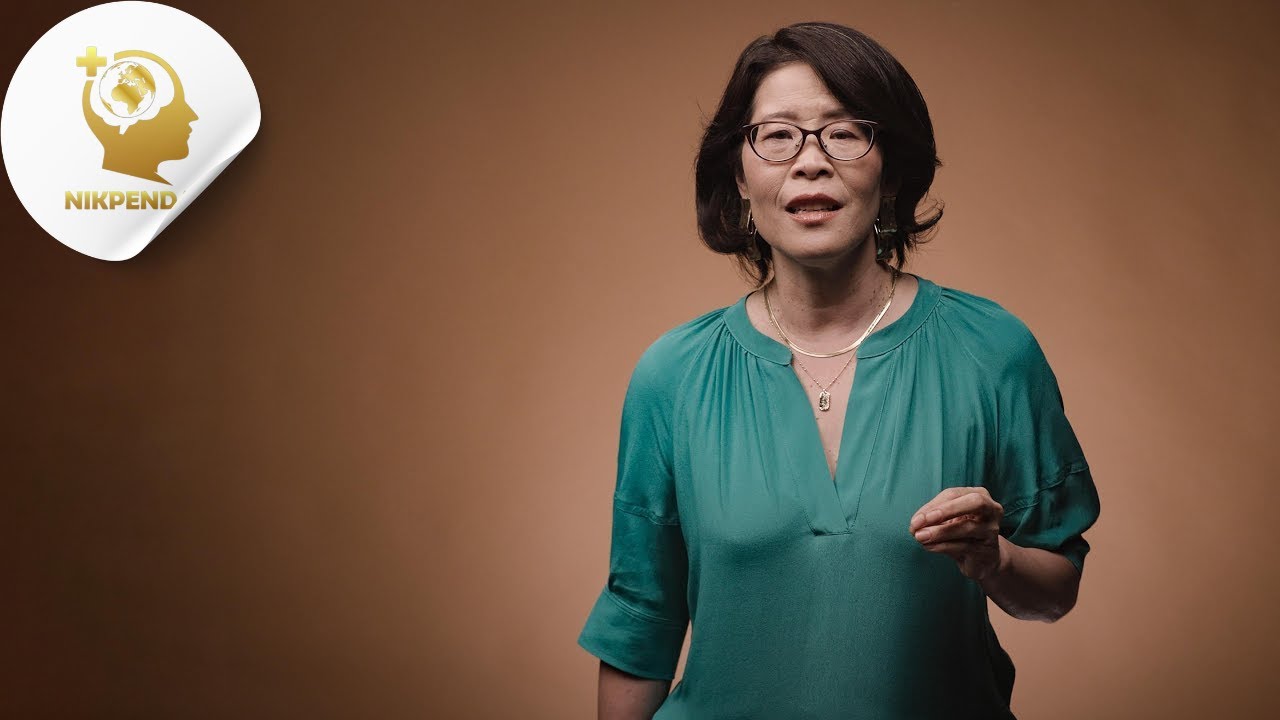
Beginner
- Task 1: Describing a Feeling. Students will be shown an image of a person looking stressed at a computer. They must respond to a simple question, “How does this person feel?” using words from the videolike anxious, stressed, or freaked out. This task helps them connect new vocabulary to a visual cue and express a simple emotion.
- Task 2: Giving Simple Instructions. Students will be asked to give two simple instructions based on the video ‘s advice. For example, “What is one thing you can do to calm down?” They should respond with a phrase like, “You can breathe deeply” or “You can move your body.” This focuses on using new verbs and vocabulary in a directive context.
- Task 3: Role-Play: Offering a Simple Solution. In pairs, one student will act out feeling anxious (e.g., sweating palms). The other student will offer one piece of simple advice from the video , such as “Try deep breathing” or “Take a walk.” This task helps them practice using target language in a practical, conversational scenario.
Intermediate
- Task 1: Explaining a Tool. Students will be asked to explain one of the two “science-based tools” for managing anxiety described in the video . They should explain either breath work or moving your body to a partner, using a few of the specific vocabulary words provided in the text like parasympathetic nervous system, neurochemicals, or dopamine. This task requires them to summarize and explain a complex concept using more specific terminology.
- Task 2: Creating a Scenario. Students will be given a situation (e.g., “You have a big presentation tomorrow”). They must create and act out a short scenario where they describe their anxiety using language from the video(e.g., “I have a lot of anxiety about this”), and then explain how they will use one of the tools to manage it. This promotes creative application of the language.
- Task 3: Discussion: The Purpose of Anxiety. Students will work in a small group to discuss the speaker’s main claim that anxiety is not always a bad thing. They should prepare to state their own opinion and use at least two key phrases from the videoto support their view, such as “Anxiety is an important tool that arose during our evolution” or that it “helps you avoid danger.”
Advanced
- Task 1: Debating a Topic. Students will work in pairs to debate the speaker’s claim that our individual and collective anxiety levels have “been turned way up too high.” One student will argue for the speaker’s position using evidence from the text, while the other will argue against it, using their own knowledge and critical thinking. This task requires high-level argumentative and discourse skills.
- Task 2: Giving a Short Talk. Students will prepare and deliver a short talk (2-3 minutes) on one of the main topics in the video , such as the relationship between anxiety and empathy, or the benefits of specific neurochemicals. They must use the target vocabulary accurately and present the information in a clear, well-structured way.
- Task 3: Role-Play: A Difficult Conversation. In pairs, one student will act as a person who has high anxiety. The other student, acting as a friend, will have a conversation with them about their anxiety. They must use language from the videoto gently help the first person “evaluate what about [the situation] makes you anxious,” and offer advice on how to “communicate with others” about their feelings, without using a condescending tone. This task requires a high level of empathy and sophisticated use of language in a nuanced social context.
Beginner
- Listening for Key Words.
Students listen to the monologue and identify key vocabulary. For example, they’re given a list of words like anxiety, stress, breathe, move, heart and must check them off as they hear them. This task helps learners recognize core vocabulary in a complex spoken context.
- Simple True/False Statements.
After listening to a specific section (e.g., the part about breath work or body movement), students are given a series of statements and decide if they’re true or false. For example: “The speaker says you should avoid anxiety” (False) or “Breathing can help you feel calm” (True). This activity helps learners extract specific, explicit details.
- Simple Question Answering.
Students listen to short, distinct sections and answer simple “wh-” questions. For example: “What happens when your boss sends an email?” (You feel anxious) or “What does the speaker say you can do in the office?” (Take a walk). This task focuses on identifying and retrieving basic facts.
Intermediate
- Listening for Definitions.
Students listen for the speaker’s definition of anxiety. They write down the different words and phrases she uses to describe its physical symptoms, such as sweaty palms, empty freaked out sensation, and racing heart. This task helps them understand how a speaker defines a complex, abstract concept through its physical manifestations.
- Explaining a Tool.
Students listen to the speaker’s explanation of breathing work or moving your body. They then summarize the steps or purpose of one of these tools in their own words, using specific vocabulary from the videosuch as parasympathetic nervous system or neurochemicals. This task requires learners to understand a concept and its underlying mechanisms.
- Summarizing a Case Study.
Students listen to the story of the NYU students and the anxiety assessment. They must summarize the experiment’s process and outcome, explaining what the students did before and after the movement session and what the result was. This task requires synthesizing information from a narrative and its scientific conclusion.
Advanced
- Analyzing Argument Structure.
Students listen to the speaker’s main argument about anxiety. They should identify the central thesis (that anxiety can be a helpful tool) and the evidence she provides to support it (evolutionary purpose, scientific tools, and the NYU study). This task demands a high level of comprehension and the ability to follow a complex, multi-point argument.
- Listening for Implied Meaning.
Students listen for the speaker’s discussion about the “superpower of empathy.” They then explain what she means by this phrase and how she argues that managing your own anxiety can help you notice and support others. This task requires students to understand an abstract idea and its underlying connection to the main topic.
- Critical Evaluation.
Students listen for the speaker’s claims and examples. They then write a short essay that evaluates the effectiveness of her argument. For example, they can discuss whether they find the “bubble bath of neurochemicals” analogy helpful or unhelpful in understanding the topic, and if the NYU student study provides convincing evidence. This task requires students to not only understand the content but also to form and articulate a critical opinion.
Beginner
- Task 1: Vocabulary Matching. Students read a list of simple words from the videoand match each to a provided definition or a picture representing the concept. Words could include: anxiety, stressed, breathe, move, nervous system. This task helps build foundational vocabulary related to emotions and physical actions.
- Task 2: Basic Comprehension Questions. Students read a short, specific section of the video(e.g., the part about breath work) and answer simple “wh-” questions to find explicit information. For example, “What does the speaker say you can do to calm anxiety?” or “How many counts does the speaker suggest for breathing?” This focuses on literal comprehension and detail extraction.
- Task 3: Simple True/False Statements. Students read a series of statements based on a short segment of the videoand decide if each is true or false. For instance, “The speaker thinks anxiety is always a bad thing” (False) or “Moving your body can help your mood” (True). This practice reinforces reading for explicit details.
Intermediate
- Task 1: Explaining a Metaphor. Students read the videoand focus on the metaphor, “it’s like giving yourself a wonderful bubble bath of neurochemicals for your brain.” They then write a short paragraph explaining the comparison, using their own words to describe the speaker’s implied meaning. This task helps learners understand and articulate figurative language.
- Task 2: Identifying and Explaining a Key Idea. Students read the section about the two “science-based tools.” They then write a paragraph explaining one of the tools, detailing its function and how it helps reduce anxiety. They should use specific terms from the text, such as neurochemicals or the parasympathetic nervous system, to demonstrate their understanding.
- Task 3: Analyzing Cause and Effect. Students read the section about the NYU students. They write a short paragraph explaining the cause-and-effect relationship described: What was the cause (the movement session) and what was the effect (decreased anxiety scores)? This task helps students understand how ideas are linked in a narrative.
Advanced
- Task 1: Analyzing Argument Structure. Students read the entire videoand write a detailed outline of the speaker’s main arguments. They should identify her central thesis (that anxiety can be a helpful tool), the problems she identifies with current anxiety levels, and the two solutions she provides. This task requires a high-level understanding of the monologue’s overall structure and logical flow.
- Task 2: Examining a Philosophical Claim. Students read the section where the speaker claims that anxiety can be a “superpower of empathy.” They then write an essay (2-3 paragraphs) that explains what the speaker means by this claim, analyzes her reasoning, and discusses whether they agree or disagree with her conclusion.
- Task 3: Summarizing and Critiquing a Scientific Argument. Students read the entire videoand write an essay that summarizes the speaker’s core argument. They should also include a brief critique of the argument, discussing its strengths (e.g., use of relatable examples) and weaknesses (e.g., oversimplification of complex scientific concepts) from a critical reading perspective.
Beginner
- Task 1: Vocabulary Matching and Writing. Students read a list of key words from the videolike anxiety, breathe, and move. They match each word to its simple definition from the text (e.g., breathe is to take in and let out air slowly) and then write a simple sentence using each word. This task helps build foundational vocabulary and reinforces spelling and sentence structure.
- Task 2: Simple Summary. Students read a short, specific section of the video , such as the example of what to do when your boss sends a stressful email. They then write a few simple sentences to summarize the speaker’s advice. This task helps learners practice summarizing a key idea in their own words.
- Task 3: Sentence Completion. Students are given a short passage from the videowith key words missing (e.g., “Deep breath directly activates the natural d-stressing part of our nervous systems called the parasympathetic nervous system.”). They read the videoand write in the missing words to complete the sentences. This task helps learners practice spelling and writing specific words in a meaningful context.
Intermediate
- Task 1: Explaining a Metaphor. Students read the videoand focus on the metaphor, “it’s like giving yourself a wonderful bubble bath of neurochemicals for your brain.” They then write a short paragraph explaining the comparison, using their own words to describe the speaker’s implied meaning. This task helps learners understand and articulate figurative language.
- Task 2: Identifying and Explaining a Key Idea. Students read the section about the two “science-based tools.” They then write a paragraph explaining one of the tools, detailing its function and how it helps reduce anxiety. They should use specific terms from the text, such as neurochemicals or the parasympathetic nervous system, to demonstrate their understanding.
- Task 3: Analyzing Cause and Effect. Students read the section about the NYU students. They write a short paragraph explaining the cause-and-effect relationship described: What was the cause (the movement session) and what was the effect (decreased anxiety scores)? This task helps students understand how ideas are linked in a narrative.
Advanced
- Task 1: Analyzing Argument Structure. Students read the entire videoand write a detailed outline of the speaker’s main arguments. They should identify her central thesis (that anxiety can be a helpful tool), the problems she identifies with current anxiety levels, and the two solutions she provides. This task requires a high-level understanding of the monologue’s overall structure and logical flow.
- Task 2: Examining a Philosophical Claim. Students read the section where the speaker claims that anxiety can be a “superpower of empathy.” They then write an essay (2-3 paragraphs) that explains what the speaker means by this claim, analyzes her reasoning, and discusses whether they agree or disagree with her conclusion.
- Task 3: Summarizing and Critiquing a Scientific Argument. Students read the entire videoand write an essay that summarizes the speaker’s core argument. They should also include a brief critique of the argument, discussing its strengths (e.g., use of relatable examples) and weaknesses (e.g., oversimplification of complex scientific concepts) from a critical reading perspective.





